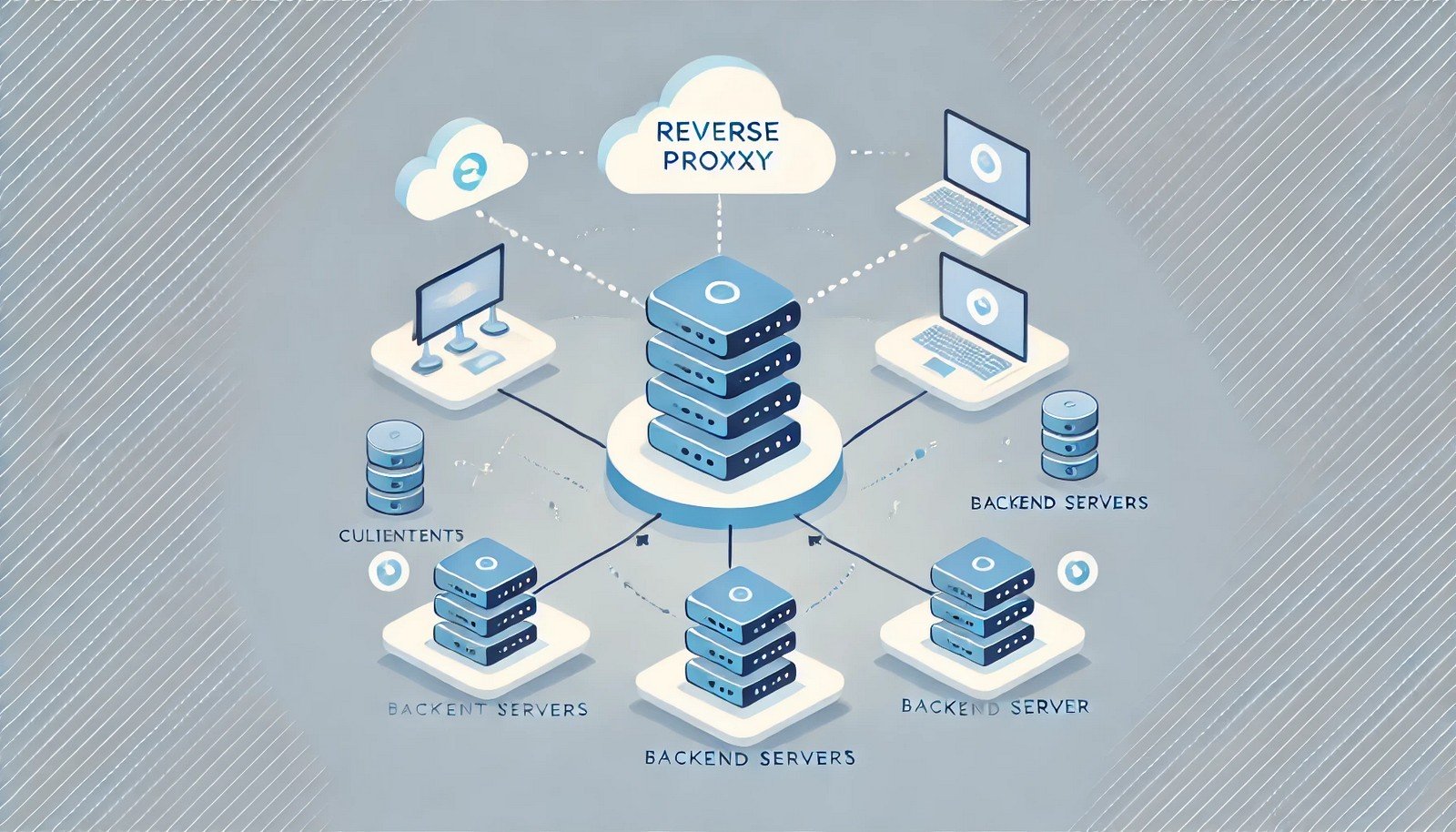Reverse Proxy

(Representational Image | Source: Dall-E)
Quick Navigation:
- Reverse Proxy Definition
- Reverse Proxy Explained Easy
- Reverse Proxy Origin
- Reverse Proxy Etymology
- Reverse Proxy Usage Trends
- Reverse Proxy Usage
- Reverse Proxy Examples in Context
- Reverse Proxy FAQ
- Reverse Proxy Related Words
Reverse Proxy Definition
A reverse proxy is a server that sits between client devices and backend servers, intercepting requests and forwarding them to the appropriate backend server. Unlike a regular proxy, which acts on behalf of clients, a reverse proxy acts on behalf of the server, providing benefits like load balancing, caching, security enhancement, and SSL encryption offloading. Popular reverse proxy solutions include Nginx, Apache, and HAProxy.
Reverse Proxy Explained Easy
Think of a reverse proxy like a receptionist at a busy office. When people arrive, the receptionist listens to what they need and then directs them to the correct department. A reverse proxy works the same way—it listens to incoming requests and sends them to the right server in the backend, keeping everything organized and secure.
Reverse Proxy Origin
The concept of the reverse proxy emerged as the internet expanded, requiring more efficient ways to distribute and manage traffic across multiple servers. In the late 1990s, with the rise of large-scale web applications, reverse proxies became essential for load balancing and security.
Reverse Proxy Etymology
The term "reverse proxy" combines "proxy," meaning a representative or intermediary, and "reverse," indicating that it works on the server's behalf rather than the client's.
Reverse Proxy Usage Trends
Reverse proxies have seen widespread adoption in the last decade as cloud computing and microservices architectures grew. They are integral to modern web applications for distributing traffic, securing web applications, and ensuring high availability. Many companies now rely on reverse proxies as part of their infrastructure.
Reverse Proxy Usage
- Formal/Technical Tagging:
Networking, Web Infrastructure, Security - Typical Collocations:
"reverse proxy configuration," "load balancing with reverse proxy," "reverse proxy server," "SSL offloading with reverse proxy"
Reverse Proxy Examples in Context
- A reverse proxy distributes traffic across multiple servers to prevent a single server from becoming overloaded.
- Large e-commerce websites use reverse proxies to improve website speed and protect backend servers from attacks.
- Reverse proxies help ensure secure communication by handling SSL/TLS encryption.
Reverse Proxy FAQ
- What is a reverse proxy?
A reverse proxy is a server that forwards client requests to backend servers and returns the responses. - How does a reverse proxy differ from a regular proxy?
A regular proxy serves client requests, while a reverse proxy serves server requests. - Why use a reverse proxy?
Benefits include load balancing, security, caching, and SSL offloading. - Which are popular reverse proxy solutions?
Common solutions include Nginx, Apache, and HAProxy. - How does a reverse proxy enhance security?
It hides backend server details, protects from direct attacks, and enables web application firewalls. - Can reverse proxies improve website performance?
Yes, through caching and load balancing. - Is SSL offloading possible with a reverse proxy?
Yes, a reverse proxy can handle SSL encryption to reduce the load on backend servers. - What is a common use case for reverse proxies?
Managing traffic for high-traffic websites and distributed systems. - How does a reverse proxy fit into a microservices architecture?
It helps route requests to different services and manages API traffic. - Is a reverse proxy required for all web applications?
Not necessarily, but it’s crucial for high-availability and secure web applications.
Reverse Proxy Related Words
- Categories/Topics:
Networking, Security, Web Hosting, Load Balancing
Did you know?
The concept of reverse proxies has evolved to include intelligent traffic management systems that can inspect and filter traffic in real time. Companies like Cloudflare use reverse proxy technology to protect millions of websites from cyber threats every day.
PicDictionary.com is an online dictionary in pictures. If you have questions or suggestions, please reach out to us on WhatsApp or Twitter.Authors | Arjun Vishnu | @ArjunAndVishnu

I am Vishnu. I like AI, Linux, Single Board Computers, and Cloud Computing. I create the web & video content, and I also write for popular websites.
My younger brother, Arjun handles image & video editing. Together, we run a YouTube Channel that's focused on reviewing gadgets and explaining technology.



Comments powered by CComment